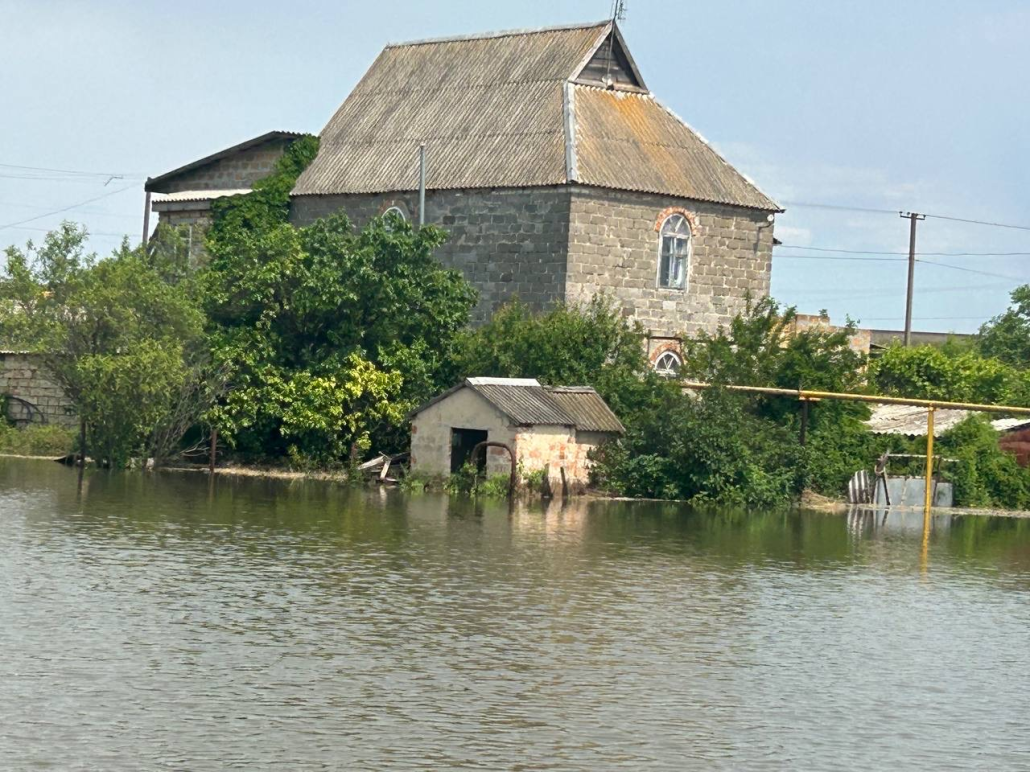Wars are devastating for both people and nature. Even when they end, their footprints stay for a long time. For example, in Ukraine, remnants of shells and mines from World War II are still being found. The impact of the ongoing war in Ukraine on the environment is yet to be fully assessed, especially in the occupied territories and combat zones. However, it is already evident that restoration will require decades.
Environmental contamination caused by shelling and explosions
As known, everything in nature is interconnected. Thus, air pollution also leads to pollution of water and soil. The main sources of emissions during military actions are primarily explosions and fires. Even more toxic are the emissions after rocket attacks on industrial plants, oil storages, power stations, and other infrastructure objects. Additionally, large part of fields and forest strips remain polluted with remnants of military equipment and ammunition.
The soil ecosystem also suffers from the negative impact of the war actions. Craters from rockets, air bombs, and artillery shells cause long-term environmental degradation. Dangerous chemicals pollute the soil and water, making the area uninhabitable and causing biodiversity loss.
Not to mention the mine threats. Since Russia's full-scale invasion of Ukraine, the country has become one of the most heavily mined countries in the world. 174,000 square kilometres, almost a third of Ukraine's territory are life-threatening due to landmines. While demining process is rather accessible in steppe zones, it is significantly more challenging to cope with this problem in forests. Unexploded shells and mines can pose a danger for a long time and contribute to forest fires.
According to estimates from the Kyiv School of Economics (KSE) and the Zoї Environment Network, the territories most affected by the war are currently in the Donetsk, Kharkiv, and Zaporizhzhia regions. Overall, the total damages from the destruction of territories and soil devastation due to military actions are estimated at $9.8 billion. This puts the use of damaged land at risk and requires reclamation, demining of areas, and disposal of explosives.
Attacks on water infrastructure
Water is a valuable resource for both humans and the environment, and it also suffers from the destructive impact of war. Sometimes it even becomes a weapon in the hands of enemies, as it happened with the Kakhovka Reservoir in Ukraine. The blowing up of the Kakhovka Hydroelectric Power Station dam by Russian military forces in June 2023 became one of the biggest technological disasters of the decade not only for Ukraine but also globally. It resulted in loss of lifes, flooding of dozens of settlements, tens of thousands of hectares of land, including reserves, destruction of unique biodiversity, pollution of the Dnipro and Black Seas, and loss of irrigation systems. The reservoir itself has dried up and essentially turned into a desert.
From the onset of the war, the Azov and Black Seas have been involved in combat actions. The Russian army often fired long-range missile launches from the maritime waters. Water pipelines, pumping stations, water treatment facilities in Ukraine also became the targets for attacks.
Agricultural war damages and losses
Agriculture has been and remains one of the key sectors of the Ukrainian economy. Fertile lands, developed agricultural industry, established logistics, and exports have made the country competitive and a significant food supplier in the world.
In the third year of the war, according to a joint study by the Government of Ukraine, the World Bank, the UN, and the European Union, the losses and damages to the agricultural sector from full-scale war in Ukraine reached $80 billion. The largest category of losses is damaged and destroyed agricultural machinery, production, and storage facilities, such as elevators and grain terminals.
Threat from nuclear power plants
On the very first day of the full-scale Russian invasion, the Russian army seized the Chernobyl Nuclear Power Plant, and the exclusion zone was under occupation for over a month. Experts described the situation as highly dangerous.
In March 2022, Russian military forces shelled the largest operating nuclear power plant Europe - the Zaporizhzhia Nuclear Power Plant in Energodar. This plant and the city Energodar are still under Russian control. There are many online images proving that militaries have their equipment and ammunition stored inside the plant, which is very dangerous. In addition to this, nuclear energy experts emphasize that the operational regime at the Zaporizhzhia Nuclear Power Plant is being violated.
In attempts to create a blackout in Ukraine by targeting energy facilities, the Russian army also attacked the territory near the Khmelnytsky Nuclear Power Plant. Although Ukrainian air defence managed to shoot down kamikaze drones, fragments damaged two units of this nuclear facility.
Overall, the situation around nuclear power plants during the war is highly perilous. In case of radiation contamination due to accidents or damage to NPPs, not only Ukraine but also many neighbouring countries would seriously suffer.







